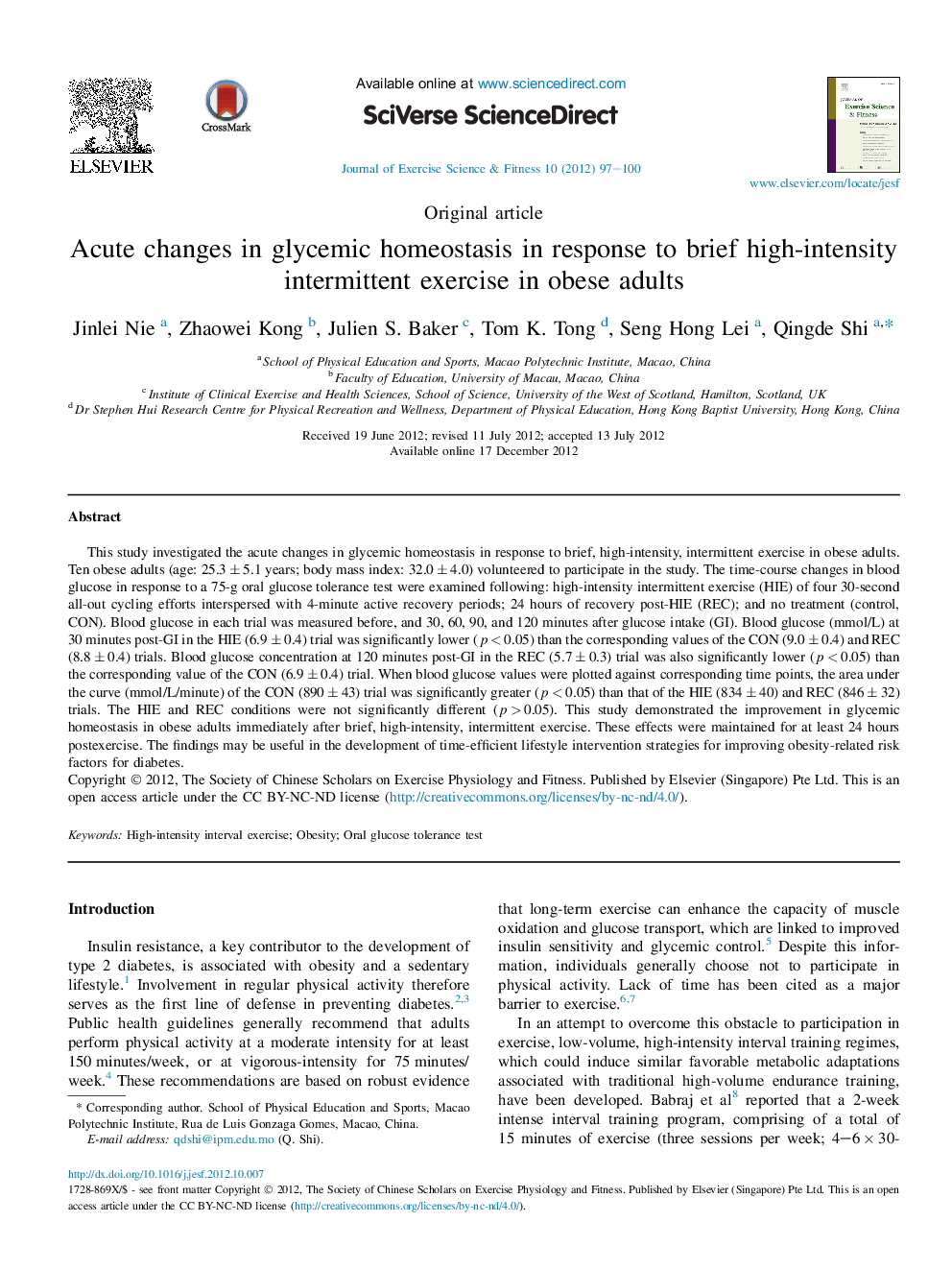| کد مقاله | کد نشریه | سال انتشار | مقاله انگلیسی | نسخه تمام متن |
|---|---|---|---|---|
| 2739647 | 1567063 | 2012 | 4 صفحه PDF | دانلود رایگان |

This study investigated the acute changes in glycemic homeostasis in response to brief, high-intensity, intermittent exercise in obese adults. Ten obese adults (age: 25.3 ± 5.1 years; body mass index: 32.0 ± 4.0) volunteered to participate in the study. The time-course changes in blood glucose in response to a 75-g oral glucose tolerance test were examined following: high-intensity intermittent exercise (HIE) of four 30-second all-out cycling efforts interspersed with 4-minute active recovery periods; 24 hours of recovery post-HIE (REC); and no treatment (control, CON). Blood glucose in each trial was measured before, and 30, 60, 90, and 120 minutes after glucose intake (GI). Blood glucose (mmol/L) at 30 minutes post-GI in the HIE (6.9 ± 0.4) trial was significantly lower (p < 0.05) than the corresponding values of the CON (9.0 ± 0.4) and REC (8.8 ± 0.4) trials. Blood glucose concentration at 120 minutes post-GI in the REC (5.7 ± 0.3) trial was also significantly lower (p < 0.05) than the corresponding value of the CON (6.9 ± 0.4) trial. When blood glucose values were plotted against corresponding time points, the area under the curve (mmol/L/minute) of the CON (890 ± 43) trial was significantly greater (p < 0.05) than that of the HIE (834 ± 40) and REC (846 ± 32) trials. The HIE and REC conditions were not significantly different (p > 0.05). This study demonstrated the improvement in glycemic homeostasis in obese adults immediately after brief, high-intensity, intermittent exercise. These effects were maintained for at least 24 hours postexercise. The findings may be useful in the development of time-efficient lifestyle intervention strategies for improving obesity-related risk factors for diabetes.
Journal: Journal of Exercise Science & Fitness - Volume 10, Issue 2, December 2012, Pages 97–100